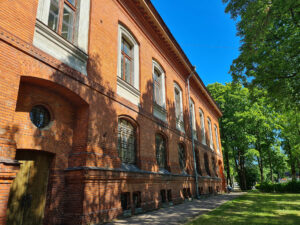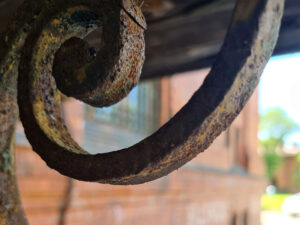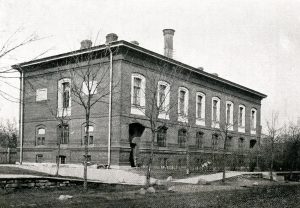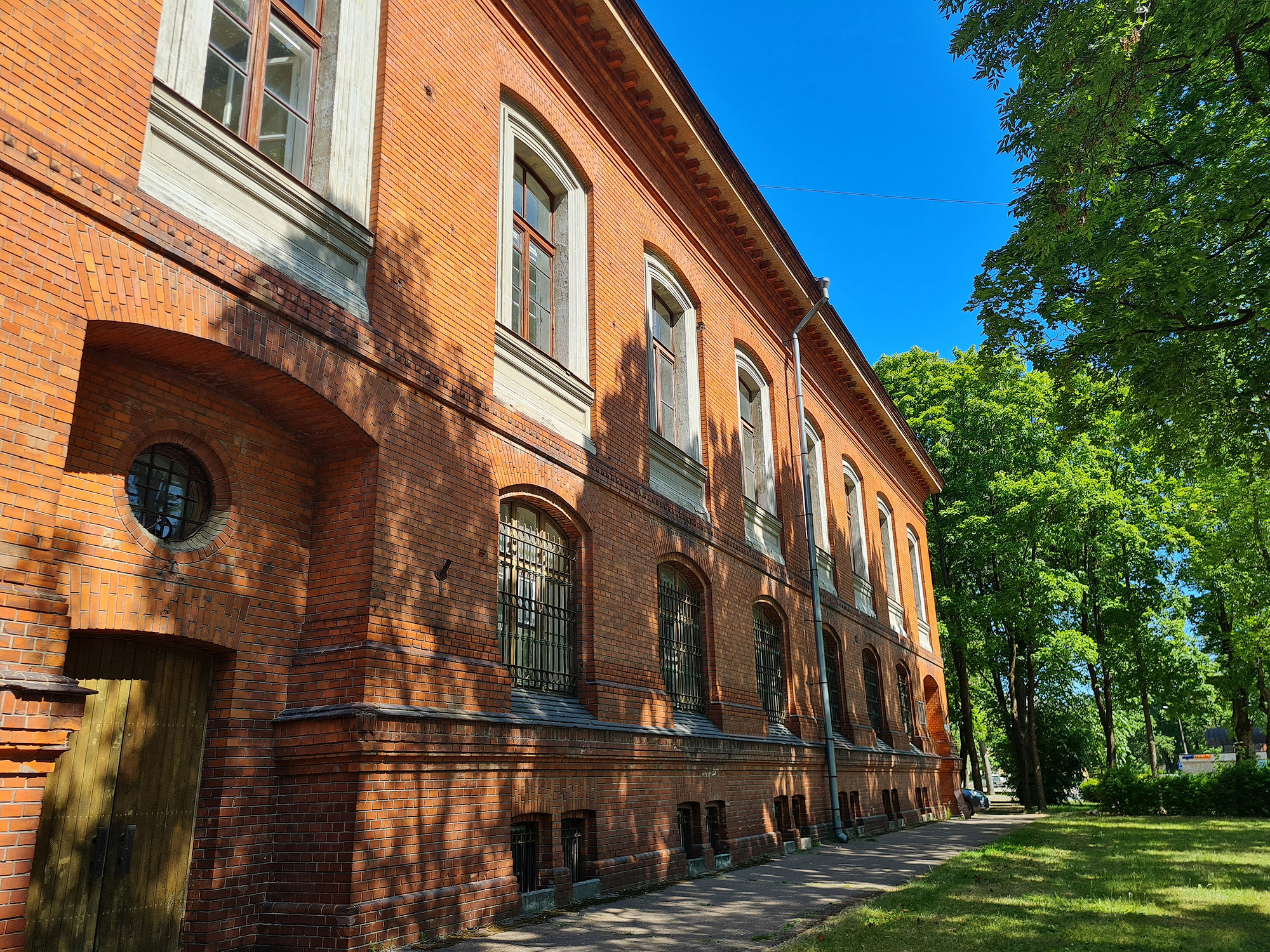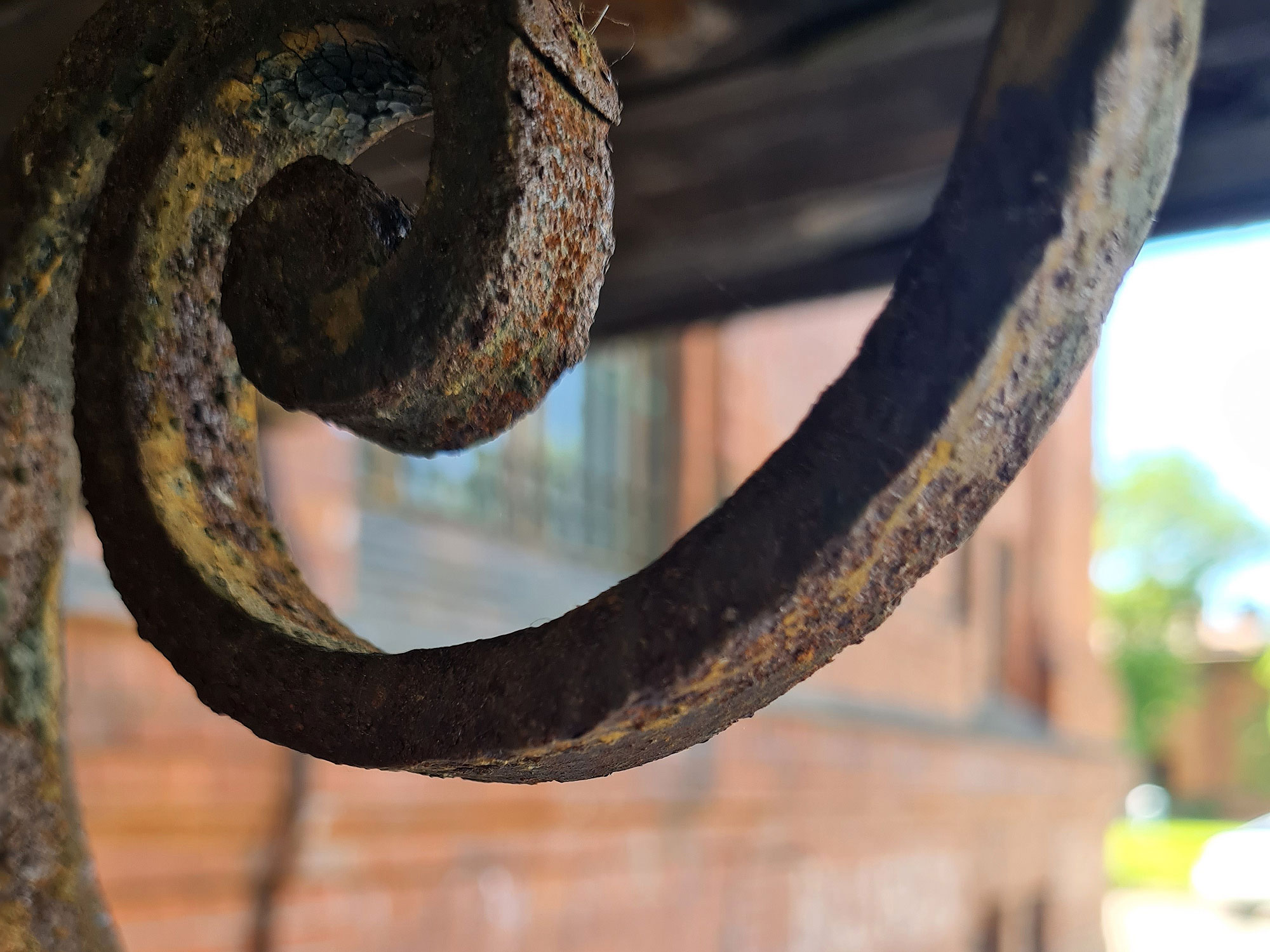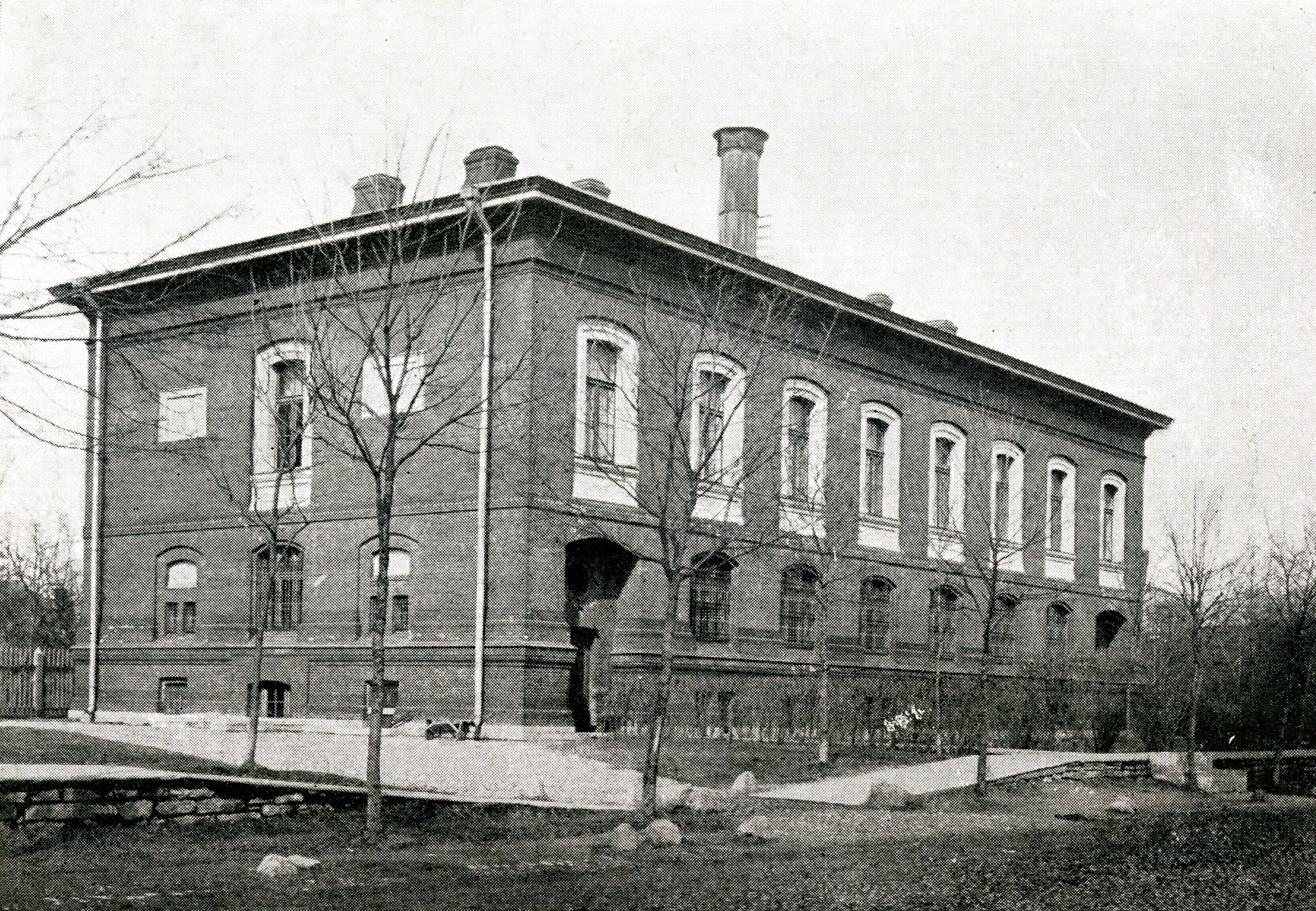As an observant guest you have surely noticed that Kreenholm has an English vibe to it. The industrial villages of Manchester, England, which is the world’s first industrial city, are considered to have been the model for establishing Kreenholm. It was in Manchester that Baron Ludwig von Knoop, the founder of Kreenholm, lived as a young man. In fact, not only the architecture, but also bosses, machines and technology came from England. All these became the foundation for the development of the factory. That is actually the reason why the Estonian and Russian workers of Kreenholm called all foreigners Englishmen for decades.
The supreme government building was constructed in 1901 upon Paul Alisch’s project. The impressive brick building follows the same Renaissance pattern as many other houses here.
The surface windows of the two-storied magnificent brick construction are even more spectacular than those in other buildings. Here we can see gorgeous cornices and sims again. By the way, this building had its own features which were wonders of that time – central heating and ventilation. Now look closely to the interesting forged metal details on the walls of the house. These were intended for torches that give light, not for holding flags, as you might first think.
We cannot talk about the Kreenholm factory without also talking about Baron Ludwig von Knoop, the forefather of the President of the European Commission, Ursula von der Leyen. In Narva, there was a saying in Russian about Knoop, which translates to something like “where there is a congregation, there is a priest, where there is a factory, there is Knoop.” Born in Germany, Baron Knoop together with his companions is the founder of Kreenholm. By that time, the wood, which had previously been processed and traded here, had run out from around Narva, and Russian Empire offered special concessions to the founders of alternative businesses here.
As a boy, Knoop went from Breemen to Manchester to live with his uncle, and at the age of 21 he started working in Moscow, Russia. Both economists and historians have tried to explain Knoop’s further success – this success was based on excellent communication skills, a wide network of acquaintances, business connections in Russia as well as in the East and in America, his expansion of the geographic area from which his factories obtained raw materials, but above all, correct and focused production decisions. As a talented man, he gained control of the entire Russian textile industry and built numerous factories, where specialists and machines from Western Europe were actively engaged. Before Kreenholm was founded, 120 textile factories across Russia were under his control, although this does not mean he directly managed each site.
In 1856, Knoop and his companions bought 20 hectares of land, Kreenholm Island and a piece of land on the left bank of the river. Two years later, the production of simple cotton cloth, raw fabric or cotton fabric, began here. This is what Narva specialized in. Knoop was extremely successful and made the right bet: he was charmed by Narva’s cheap water energy, because electricity was not used yet. Moreover, the port was in close proximity to St. Petersburg. In 1900, his life’s work was crowned with great success, when Kreenholm was awarded the grand prize at the World Exhibition in Paris. However, by that time Knoop had already passed away.
